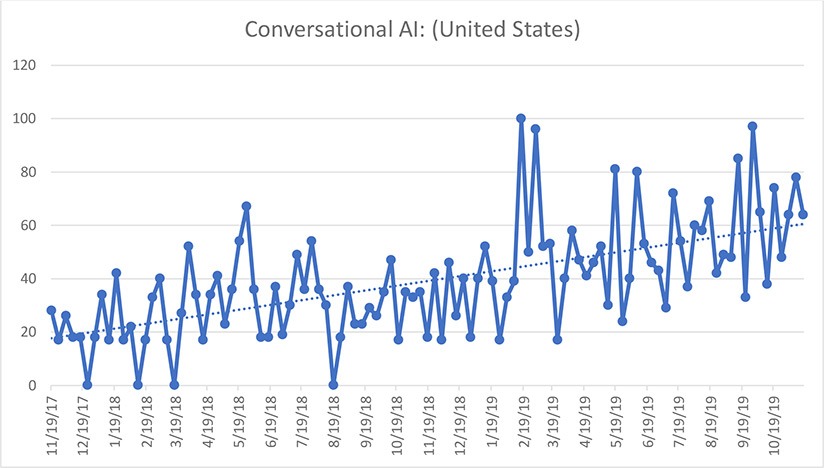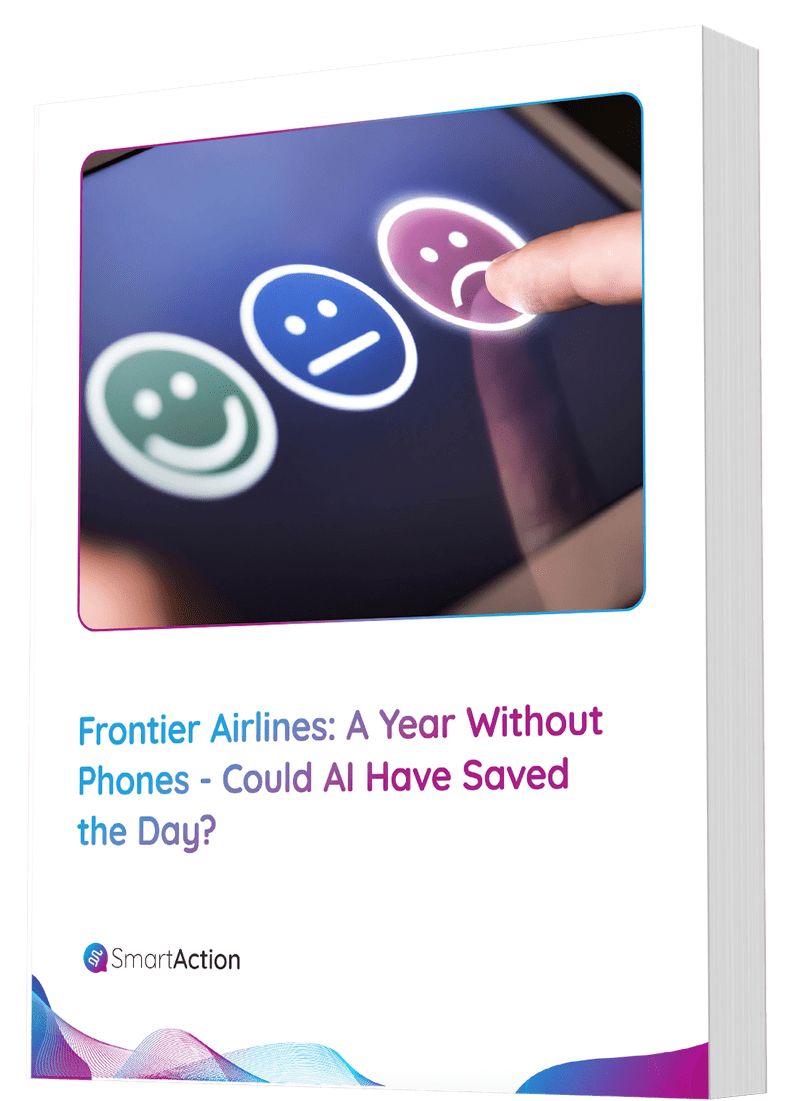2020 PREDICTIONS: Conversational AI Trends
What a journey it’s been in the conversational artificial intelligence space. Over the past two years, while Google searches for “speech recognition” have fallen and queries for “artificial intelligence” have flatlined, searches for “conversational ai” are on an upward trajectory.

According to Gartner’s 2019 Hype Cycle for Customer Service & Support Technologies, Virtual Customer Assistants have just eked out beyond the “Peak of Inflated Expectations” and into the “Trough of Disillusionment.” Upon first glance, this may appear to be an assortment of meaningless words pushed together, but according to Gartner, this means the next 5 years will see an escalated pace in AI adoption for customer service.
Now that the risks have been taken by the early adopters, this means the early majority will be implementing conversational AI at a rapid pace, moving automated customer service into the mainstream.
As one of the participants in this emerging market, we’re seeing a handful of trends from 2019 that are worth sharing…
Talk is the new Type
Ok chatbots, you’ve had your fun. Much like Winona Ryder, while traditional IVRs faded into obscurity in the early 2000s, voice control is having its Stranger Things come back. In the next five years, industry experts predict that nearly every application will integrate voice technology in some way. Why? Because it works well. Speech recognition and natural language processing technologies have taken off in capabilities. Implemented and designed correctly, these applications work more efficiently for the consumer than taking the time to write things out or to tap through an application. It’s predicted that 50% of searches will be conducted through voice in 2020 (and 100% will be monitored by the Russian government).
Conversational UX
If you’ve experienced a bad Virtual Agent recently, chances are, it may have had nothing to do with the underlying technologies and everything to do with how it was designed. Luckily, we’ve seen a rapid growth in the area of user experience design within conversational AI. Conversational UX focuses on areas like:
- how questions are asked to elicit an expected response
- how much information to include in a statement
- how to alleviate friction and reduce frustration, etc.
All in all – the power of AI can’t be harnessed without a CX specialist who obsesses over the ergonomics of a conversation between human and machine. The next few years we will see a huge investment in this area and more than any underlying technology – will lend a hand to increased consumer satisfaction and in turn, increased adoption of conversational AI applications.
Use Case Focus
While Amazon Alexa and Google Assistant continue to add skills and capabilities on a nearly hourly basis, the rest of the Conversational AI industry is increasingly focusing on applications that serve a true utility by honing models for specific use cases. For example, scheduling appointments used to be a huge hang-up for Virtual Agents. It’s a true natural language application. So in the arena of conversational AI, if a vendor can’t do scheduling well, it’s unlikely they are doing anything else well.
Since the early adopter phase is coming to a close, this means enterprises benefit in several ways. First, apps no longer need to be built from scratch. Models are trained and industry templates are already in place that merely need to be customized for specific needs. Second, the CX services wing beyond the AI technology itself has been curating talent. There’s nothing easy about conversations with machines. It takes experts across different CX disciplines to manage the design, build and ongoing operation of any self-service application.
Look for partners who have deep experience, templates, and roadmaps within your specific requirements – whether it’s industry-wide, like healthcare and financial services – or use case specific, like debt collection and reservations.
There are 20 more trends I could probably list out but this isn’t Buzzfeed and you have a busy day now trying to map out your Conversational AI strategy for 2020. If you need a guide for how to get started, check this out:






